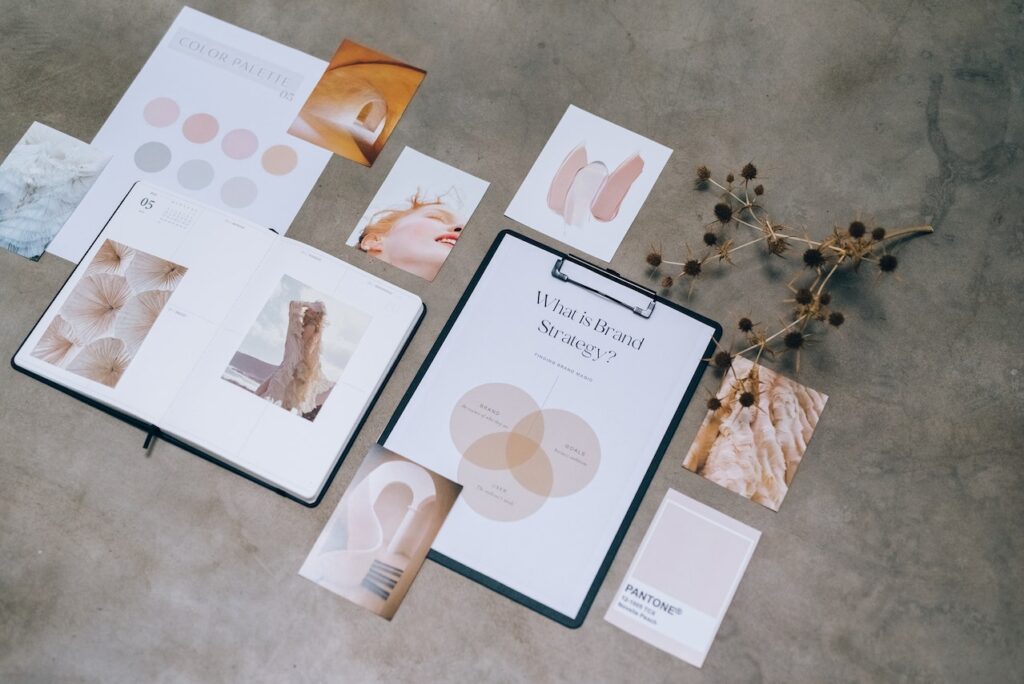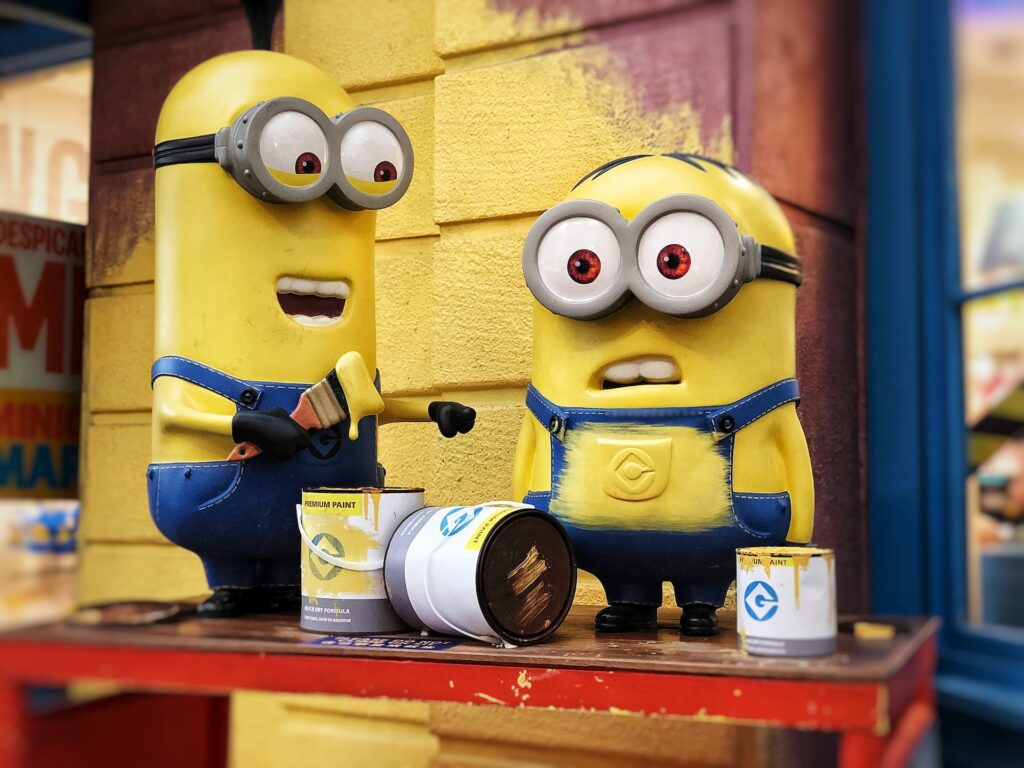When creating characters for video games, animated cartoons, advertisements, and even cartoons, concept art is the critical first step in the process. As you will see in greater detail, concept art is all about providing the initial representation of a character, giving other team members a starting point to create the final character design.
Devising a character concept art involves numerous stages, like reference collection, thumbnailing, details, and shading – don’t worry, we’ll take a closer look at them in this article, which also tackles some misconceptions about concept art and character design, and some tips and tricks for creating concept art people will love.
Let’s get started on this journey!
What is character concept art?
Simply put, character concept art is the visual representation of a character. It is a core step for animation and game development studios, taking place very early in the process. The main purpose of character concept artists is to explore and refine the initial ideas for a character, which allows professionals to experiment with different directions, body shapes, sizes, colors, and much more that can aid in the final design.
Furthermore, it’s an extremely effective and visual way for the creative team to communicate their ideas and vision to other teams, which may include writers, animators, programmers, designers, and even those in charge of marketing, giving them a foundation on top of which the final design will be created.
All in all, you can think of character concept art as the blueprint for a character, which visually explains how they will look like. Sometimes, final concept artworks might even allude to the character’s personality, backstory, and skills.

Character concept art vs character design: are there any differences?
One of the biggest misconceptions when it comes to creating characters for games and other media types is that “character concept art” and “character design” are interchangeable terms. Indeed, they share a lot of similarities, but there are some subtle differences between the two:
- Purpose: character concept artists focus on exploring as many ideas as possible in a short timeframe, while character designers take those ideas and refine them into the final design, which can then be used in a game or animation;
- Level of detail: character concept art requires less polish and details than character design, as they are meant to be rough sketches depicting the character’s most prominent features. Character design, on the other hand, works on top of the work of concept artists, refining its visual elements and adding all relevant details;
- Collaboration with other team members: character concept artists usually work in tandem with the creative team lead, while character designers go through a multidisciplinary approach, which requires close contact with other departments (like game design, worldbuilders, writers, and so on).
Creating awesome character concept art: learn the process
Research and reference collection: get inspired!
The process used to create awe-inspiring character concept art usually starts with some research and reference collection. In this stage, artists gather inspiration from various sources, such as books, quotes, movies, games, and even real-life animals/objects if applicable.
Following the brief given by their superiors, concept artists will tinker with various art styles, character archetypes, and cultural elements that may relate to the character in some way.
Moodboards are yet another tool they can use for inspiration, as they provide a visual reference for the overall tone, color palette, and style they want to achieve with their concept art. It might also be helpful after the concept art is created, as character designers might refer to the moodboard for extra inspiration.

First sketches and thumbnailing: create outlines
In art, thumbnailing refers to the process of creating small, rough sketches of something to explore numerous ideas and compositions. In character concept art, this technique is used to create sketches in which the artist experiments with various poses, basic shapes, and proportions to find the best way to visually communicate the character’s traits and role.
By creating multiple rough sketches, concept artists can compare and contrast different designs, remove those that weren’t satisfying, and polish their favorite ones. Furthermore, as thumbnails are small in size and quick to create, character concept artists can easily experiment with dozens of approaches for a particular character within the same day, increasing the odds of finding the perfect solution before moving through the following steps.
Adding colors and details: make your character unique
Once the team has settled on a general direction for the character, it’s time to start adding some details to their creation. This includes things like clothing, accessories, and props that help to flesh out the character’s appearance, personality, and other defining features. Concept artists might have to go through multiple iterations trying to find the right color palette and combination of clothes and accessories before something just feels right.
These steps are usually done digitally with tools like Adobe Photoshop (premium) or Krita (free), as their tools and features allow for quick and easy experimentation. Do you want to change the texture of something? You’re some clicks away. Do you feel like the shorts could be a tad longer? You’re probably a Ctrl + T away from it. Do you believe that the color used should be a bit warmer? All you have to do is select the correct later and change the color.
It is also in this step that some ideas for magical abilities are envisioned by concept artists working on games like League of Legends and Overwatch. Once more, it’s key for concept artists to let their minds wander and for them to embrace experimentation to the maximum.
Shading and rendering: polishing your character concept art
Shading is the process of adding the illusion of depth and dimension to drawings, and there is a variety of approaches – hatching, cross-hatching, and blending to name a few. With this technique, concept artists can create the impression of shadows and highlights, which are critical to making a character appear more three-dimensional and realistic.
Furthermore, shading can be used to convey a sense of material of their clothes/accessories and even the mood of a character, as well as drawing attention to certain parts of the character. In short, shading and rendering are processes that help enhance the character concept art’s overall appearance, giving other team members a complete and polished slate to work on.
Tips for creating interesting character concept art
Now that you understand the process of creating the concept art for a character, let’s take a look at some of the best tips for an interesting character design:
Pay attention to your basic shapes
In character design, especially for highly stylized media types, the use of basic shapes is an essential technique that artists use to create characters that are easy to recognize. There are three basic shapes on which many characters are based::
- Circles and ellipses: they are unique in that they don’t have hard edges, so they appear organic and smooth. They are also great for characters with friendly, approachable, and soft demeanors, evoking feelings of warmth and comfort;
- Squares and rectangles: these quadrilaterals are largely employed on characters that exude seriousness, security, and stability, like superheroes, military personnel, and protective characters;
- Triangles and pointed shapes: they see great use with characters that evoke feelings of danger, aggression, direction, or chaos. It’s also used to create a sense of tension and instability in the posture of a character.

Exaggerating physical features is usually fine!
Indeed, it depends on the art style concept artists have to follow, but in highly stylized games and other media types seeing characters with exaggerated features is commonplace. And it’s purposeful, as they draw attention to a character’s particular physical trait – for example, characters with gigantic arms will symbolize strength, whereas elongated and big heads might imply intelligence.
Mix and match straight and curved lines
In character concept art creation, using a mix of straight and curved lines is critical to creating visual interest while adding some variation to the design. Straight lines are closely related to concepts of strength and solidity, whereas curved lines usually suggest fluidity and grace.
By combining both types of lines, artists can emphasize certain features and add complexity to the design. Additionally, using both straight and curved lines in the character’s design is a surefire way to balance the overall structure of a character, making them visually pleasing to the viewer.
Be careful with your details
Generally speaking, less is more. Concept artists don’t need to add details to their creations like madmen – as adding too many will make a character look cluttered. A good rule of thumb is to focus on the key features and let the viewers and/or players fill in the gaps with their own imagination.
Wrapping it up
In conclusion, character concept art is a fundamental step in creating characters for any type of media – be they video games or mainstream cartoons. By following an easy-to-understand process that involves collecting references, speedy thumbnailing, adding details, and shading, concept artists can bring their creations to life and lay the groundwork for the final character design.
As simple as the process may seem, creating outstanding character concept art still requires a lot of practice and a deep understanding of the design principles that govern character design. And if you need professional concept art services, why not work with us?
We are Main Leaf, a game development studio in the market since 2010. While we focus on creating beautiful games on Unity and Unreal engines, we have a team of experienced artists who can help you bring your vision to life – be it through character concept art or fully-fledged 3D environments, we can do them all!
If you’re interested in working with us on your upcoming project, all you have to do is request a game quote below. We’ll respond within 24 hours!

